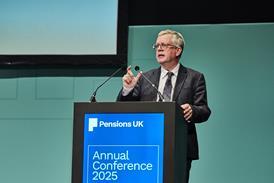The chair of the Work and Pensions Committee has written to the Pensions Regulator asking it to reflect on lessons it should have learned from its handling of the Kodak Pension Plan, which this week announced it faced Pension Protection Fund entry.
Frank Field welcomed the fact that members have received improved benefits in the years since photography company Kodak UK was granted a regulated apportionment arrangement, but questioned whether the deal had protected the interests of the pensions lifeboat.
Eastman Kodak, the US parent of Kodak UK, filed for chapter 11 bankruptcy in January 2012. The insolvency threatened to cripple Kodak UK, as well as jeopardising guarantees the company had written to the KPP and its 15,000 members.
With little hope of recovering its buyout deficit, the link between the scheme and Kodak UK was broken in 2013 with the regulator’s approval.
If you’re buying something which is a single business... you clearly have a much greater degree of polarised risk
Darren Masters, Mercer
In return, a new Kodak scheme paying lower benefits acquired imaging business Alaris, one of the few profitable divisions in Kodak’s estate, for the discounted sum of $325m (£244.8m) in cash.
The deal was intended to allow members ‘PPF-plus’ benefits while allowing Alaris to continue trading and supporting the scheme, but trustees have now warned that the bet has not paid off.
“Kodak Alaris is doing well, but not well enough to support the plan in the long term. There is nothing to suggest that this will change in the next few years,” the scheme told members in an update.
As the scheme’s employer has not become insolvent and indeed is an asset of the scheme, entry into the PPF will require the regulator to wind up the scheme, using a power built into the RAA agreement, along with regular monitoring and restrictions on investments.
The trustee board has asked Alaris to consider selling some or all of its assets to improve the funding position before it tips into the lifeboat.
Field wants answers
The terms of the deal, which was unusual both in allowing the scheme to continue running and in seeing the scheme pay for assets, have raised eyebrows on the pensions select committee.
“Members of the scheme have received benefits better than the PPF for more than four years longer than they might otherwise have done, which is welcome,” wrote Field. “Nevertheless, the PPF is now facing its biggest single claim to date,” he added.
“In the light of this announcement, might you please reflect on whether there are any lessons that the Pensions Regulator could usefully learn from this unusual experience?” he asked chief executive Lesley Titcomb. “In particular, it would be helpful to have your assessment of the level of protection it has provided for the PPF, as envisaged by the section 89 report,” he added.
A calculated 'gamble'
The Kodak RAA certainly involved a large amount of risk in the scheme’s portfolio, albeit a level that the regulator and the PPF’s detailed analysis suggested was worth taking, said Darren Masters, head of Mercer’s covenant consulting group.
“If you look at the nature of the type of asset that you’re investing in, if you’re buying something which is a single business... you clearly have a much greater degree of polarised risk,” he said. Masters expected the regulator to pull the plug quickly to stem losses for the PPF.
While that gamble has not had the desired result and will likely now cost the PPF more, it looks to have protected jobs at the Alaris division, and has also given the lifeboat more time to plan the scheme’s entry.
“What this sort of structure does do I guess, from the PPF’s point of view, is it gives them a bit more of an orderly entrance,” said Barnett Waddingham partner Simon Taylor. “I’m sure in the background the regulator and the PPF have been all over this working out where it’s all going.”
Should zombies be tackled?
What's more, the “gamble” taken by the regulator has also given members a better deal, illustrating a dilemma the regulator faces when dealing with all so-called zombie schemes, said Masters.
A zombie scheme is one with a very weak or non-existent sponsor, where there is no realistic chance of paying benefits in full. As zombie employers struggle on, retiring members see their benefits protected by the PPF’s benefit structure, albeit at a greater cost to the lifeboat.
“From a member perspective, they wouldn’t thank you for crystallising the position,” said Masters. He doubted the regulator would take steps to push the UK’s zombies into the PPF, but added that it would “be asking some very difficult questions of trustees”.






















